Estimated reading time 11 minutes, 40 seconds.
When they were kids, brothers Peter and Steve Cos shared a room.
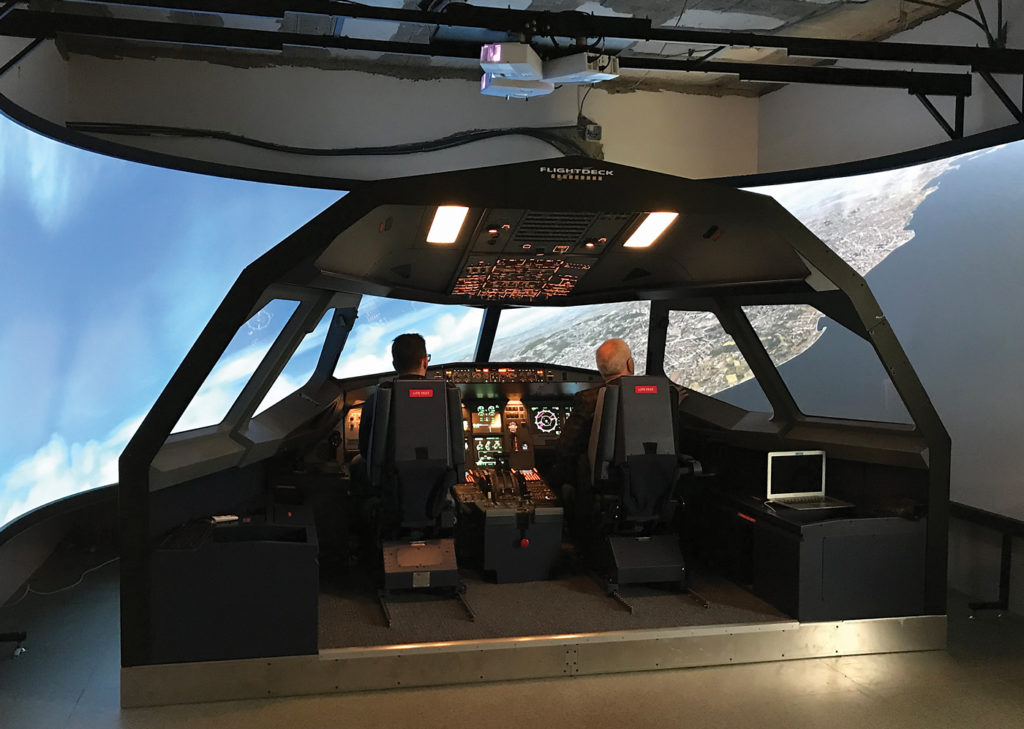
Of their family’s five siblings, the two boys also shared a love for aviation — a bond that would keep them connected well into adulthood.
As they grew up, the boys — whose parents had met in 1959 as employees of Canadian Pacific Air Lines — discovered a mutual passion for aircraft modelling and flight simulation.
Peter, who was working in car audio systems, and Steve, who was in the auto body repair business, often tinkered around in Peter’s basement, building parts and pieces to integrate into their own flight simulator.
Gradually, those components got bigger, until they finally got their hands on the nose section of an Airbus flight training device that was being discarded by Atlantis Systems International, a flight simulation and training company in Brampton, Ont.
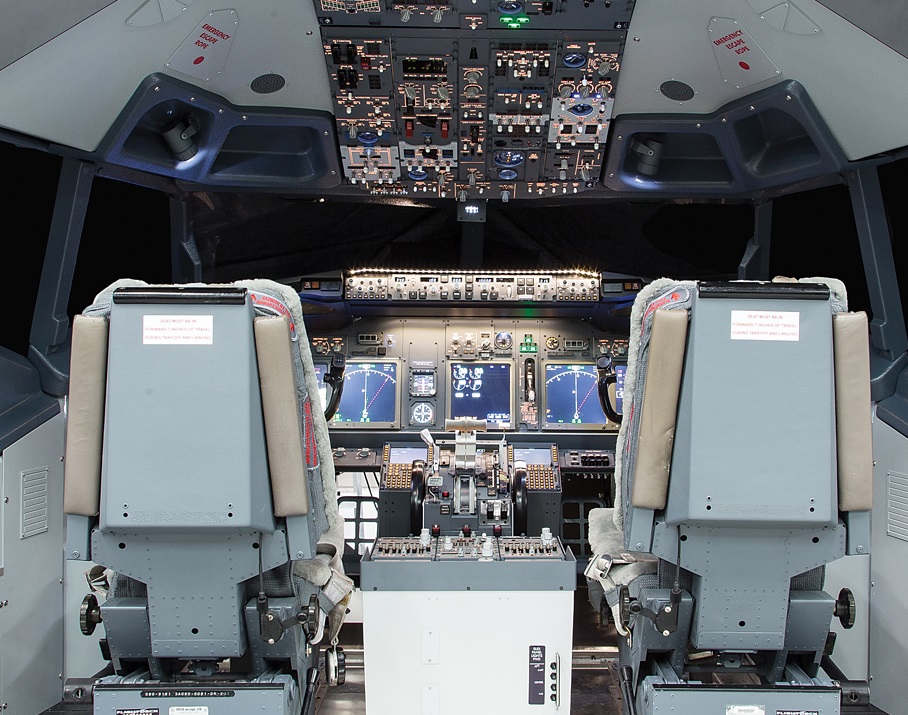
“It was always about airplanes,” recalled Peter. “It was kind of like we were building our own devices and around 1999, it became a thing where we were starting to build things for other people.”
But the tipping point really came when Peter got out of the car audio business and started taking on a few aviation-related illustration contracts.
“I was pretty good at illustration and I was drawing really detailed three dimensional posters of cockpits. So, I went to the building where Air Canada held groundschools, and I asked for the director of training. I caught him just as he was leaving for a long weekend, and I asked for 30 seconds of his time.
“I unrolled some really detailed drawings of instrument panels. He asked if I could draw the circuit panel of a [Bombardier] CRJ, and I said sure.”
Air Canada bought several of Peter’s posters and asked him to illustrate their Airbus paper trainers.
Later, after Atlantis Systems CEO John Wright took him on as a full-time employee, Peter was invited to pitch a solution to the U.S. Federal Aviation Administration in 2002. The agency was looking for air marshal training devices.
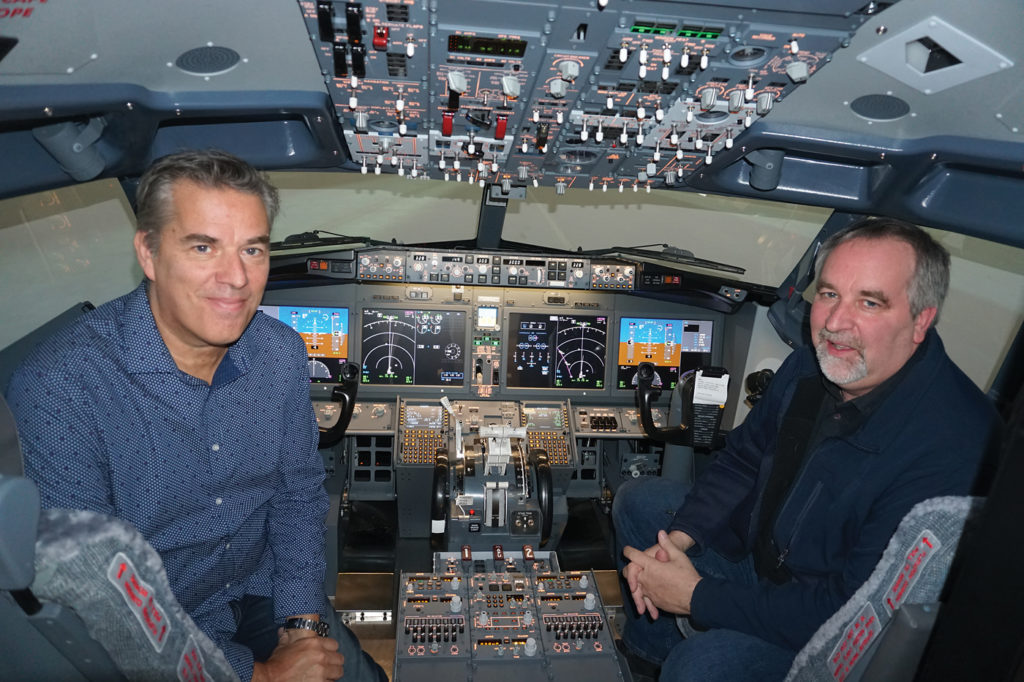
“The FAA had seen some of my paper trainers for the A320. They wanted 12 similar devices that had functional autopilot controls and radio management panels; they were trying to teach air marshals to deal with incapacitated pilots. They didn’t have a large budget and they needed a dozen trainers in six weeks.”
Due to the tight turnaround time the trainers were built with realistic-looking parts to pass an initial inspection — and then working components were subbed in later. The project was a $1.4 million success.
Shortly thereafter, as the aerospace industry was reeling from the aftershocks of the Sept. 11, 2001 terrorist attacks, Peter was a victim of cutbacks at Atlantis. But CEO John Wright encouraged him to further develop his home-based business, Flightdeck Solutions (FDS).
“He helped me realize this was attainable,” said Peter. “I spoke to my wife and that’s when the whole thing took off. I pulled everything out of the basement in early 2003 and we opened a tiny shop in Markham, Ont., in a rented room that was so small my one machine had to be put in the hallway!”
Steve — always a “hands-on guy,” according to Peter — joined FDS in 2007 as vice-president and special projects manager.
As president, Peter handles sales, marketing and product planning, while Steve focuses on technical development and customer service, overseeing device setup for customers all over the world.
It’s a partnership that works, much like their shared childhood rooming arrangement.

A burgeoning business
In the early years, FDS built its business catering to flight simulation enthusiasts who were constructing their own devices and needed replica flight deck components, parts and sections.
Eventually, major manufacturers came calling, too, including Boeing, which ended up commissioning a mock-up for the yet to be released U.S. Navy P-8A Poseidon.
“We found a retired Boeing 737-500. We rebuilt everything, put it together, and they put the real aircraft software and components in there.”
When NATO needed to upgrade the flight deck on its E-3 AWACS aircraft — a modified Boeing 707 equipped with a radar dome mounted on the fuselage — FDS hunted around for a 707 throttle to integrate into a specialized lab set-up.
And when Boeing’s Long Beach, Calif., factory — at the time home to the C-17 Globemaster III — wanted the ability to display various cockpit upgrade options for the massive transport aircraft, FDS obliged by building a flight deck with a removable instrument panel that could be “upgraded” to glass avionics.
Even the King of Bahrain turned to FDS when he decided to buy a flight simulator.
“The King of Bahrain is a big flight sim fan — he has a little alcove office where he decided to buy a flight sim to put next to his golf sim — that was one of the first major trainers we ever built [in 2007-2008]. He knew I was a big Formula One fan and invited me as his guest to see the race. It was a once in a lifetime experience,” said Peter.
Other notable customers over the years have included a famous singer who commissioned a simulator as a Christmas present for her husband at the time, a major flight simulation enthusiast. The device featured a single seat with an overhead panel and motorized throttle.
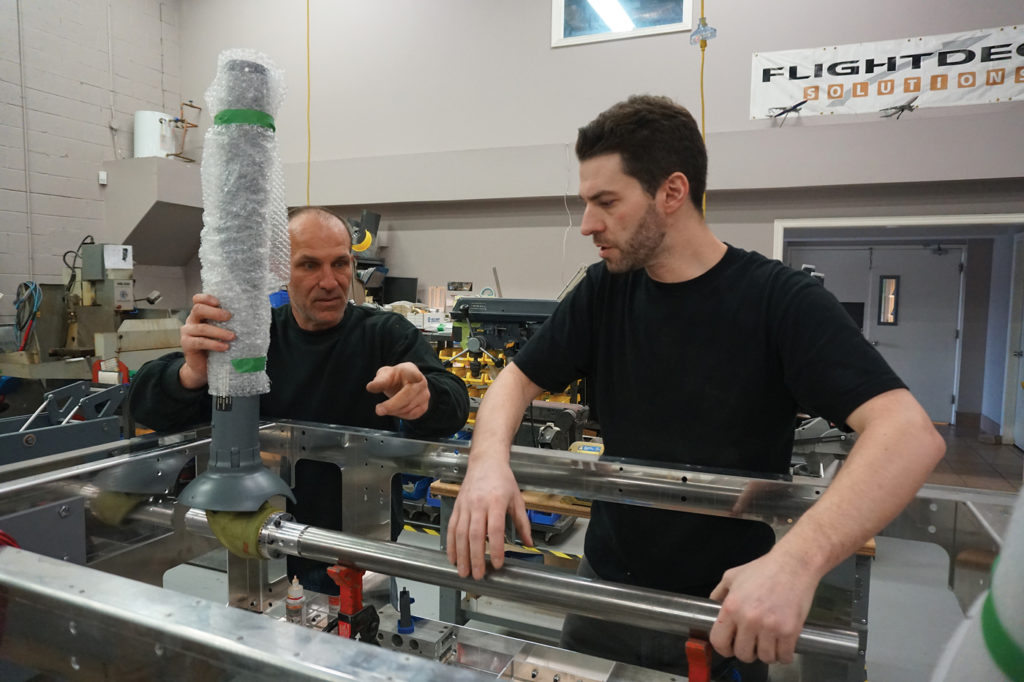
The “two brothers from Canada” were amazed when a longtime U.S. Navy customer invited them for a VIP tour of his ship. To their surprise, they discovered he was an admiral in charge of an entire U.S. Navy Pacific Strike Group, and they were flown out to his aircraft carrier while it was at sea!
Today, a significant portion of FDS’ sales are to serious high-end home simulator builders.
“This is their passion; this is their thing,” said Peter. “We’ve got a customer, for example, who is a hedge fund manager living in Vegas and a former Air National Guard captain. He bought a complete 777 simulator; it’s in his living room.”
Aside from enthusiasts, the majority of the company’s customers include airlines, flight schools, the entertainment industry and custom work for large companies and manufacturers, including Boeing, Honeywell, CAE, ECA Faros, the FAA and iPilot.
“I would say about two-thirds of our business is trainers,” said Peter Cos. “That’s a pretty healthy number, as complete trainers are where we are most focused.
“Our market was originally the enthusiast category, so we’ve tried to keep our prices in range for those guys. But we’re transitioning now where we will be selling a trainer with a certain level of certification ability.”
“It’s all about throughput”
Today, FDS has 25 staff members and is based in an 8,000-square-foot facility in Newmarket — quarters it is rapidly outgrowing.
Peter said his goal is to build three complete trainers a month. In the busy workshop, employees assemble components for simulators bound for customers all over the world. When the units are finished, they are packaged and shipped by air or sea.
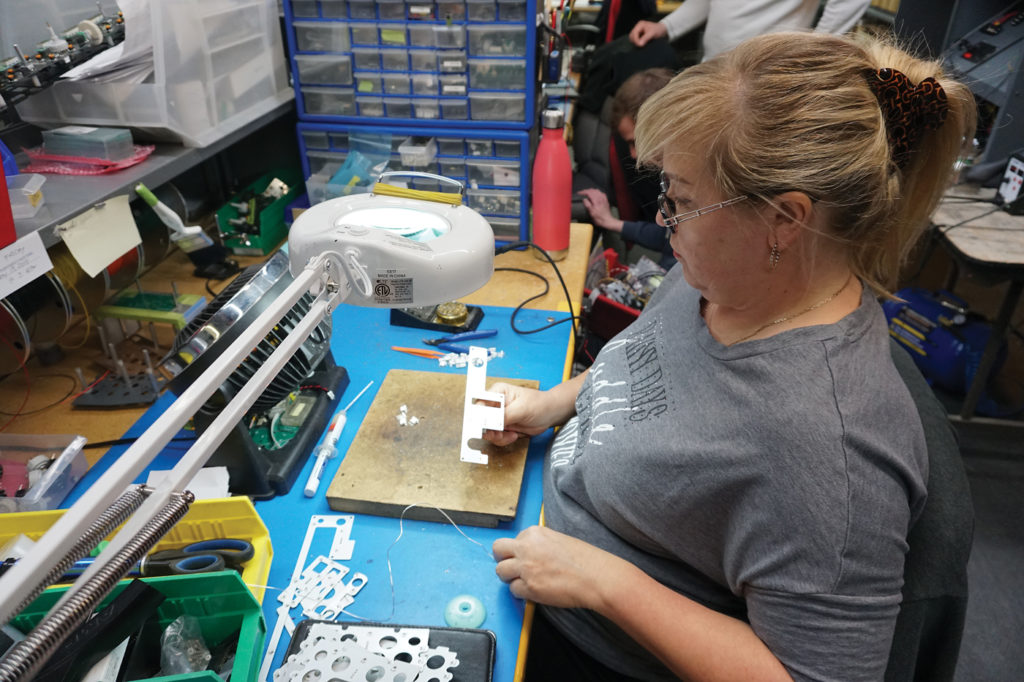
“When I was building simulators in my basement, I had nine tools. Now, I own a forklift,” Peter joked, navigating the busy production floor when Skies visited FDS.
Most trainers the company makes are dual- or single-seat, fixed-base procedural training units, although FDS can work with partners to install motion platforms. Available models include the Airbus A320 and Boeing 737NG, 737 MAX, 747-400, 747-8, 777 and 787, along with a steady flow of custom projects.
While some parts are sourced externally, FDS machines other components and uses laser cutters to outline white lettering and backlit lines. Wiring harnesses are assembled by hand. Rudder pedals, cockpit panels, throttles, thrust levers, sidesticks and oxygen panels — complete with the sound of oxygen flowing — are just some of the many parts available for individual sale. In fact, the Cos brothers take pride in saying that no order is too small.
Meanwhile, large companies like L-3 Communications and ECA-Faros work with FDS to realize lower cost solutions to their flight simulation needs.
FDS also has a track record for innovation: When crew seats became harder to find, staff simply found a way to build them. Complete with lamb’s wool coverings, the seats move and slide exactly like OEM originals, at a fraction of the cost. FDS sells its seats separately, with the most expensive model priced at $3,299.
Shifting markets
Calling himself an “accidental entrepreneur,” Peter said he only looks two years down the road, because markets are shifting that quickly these days.
During the 2008 financial crisis in the U.S., for example, that market dried up while at the same time, China emerged as an increasingly important FDS customer.
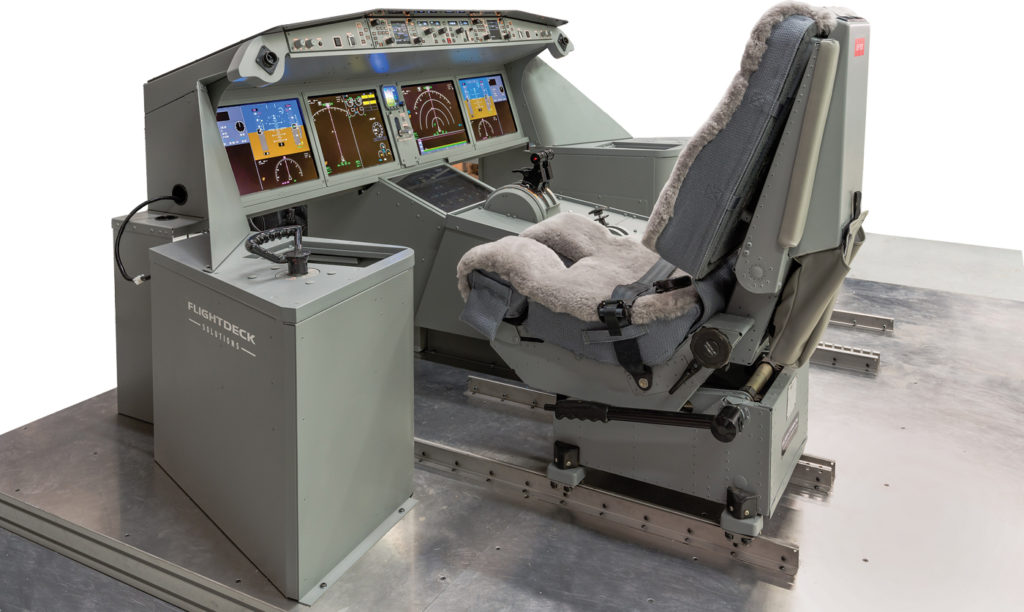
As far as new markets go, FDS is targeting areas where there is a general need for a 737 trainer, for example, with several low-cost carriers and no in-house training programs. An FDS device can serve as a training element to help prepare pilots for type transitions or check rides.
“The other big market for us is entertainment. People are opening up locations where they have these trainers, and people can go in and try them out. In those markets, we’ve sold more than 100 trainers in the past 10 years or so.”
Peter said he is also working to expand the FDS representative network around the world, including the EU and recently in Korea.
“In the certified devices, I think we are a real up-and-comer in the marketplace. Maybe we’ll get into the low-cost carrier market. They understand the value of training, but it’s a real cost centre for them.”
But no matter the customer, Peter and Steve Cos are all about supporting them wherever they are.
“Steve has been a huge part of our growth, because he provides the technical support,” said Peter. “He provides online support and also visits customers. He will often talk people through technical issues.”
He was quick to credit the rest of the staff, too.
“We’ve always had a really strong group around us. I have such a good team and we don’t have a lot of turnover here — we pay above average, with benefits, and we’ve also just started a profit-sharing program.
“My wife, Sorina, has been with us as well for the past 10 years and handles the financial end of things with her business expertise.”
It’s a long way from that shared bedroom where they used to assemble aircraft models — but for two brothers with passion, building flight simulation devices doesn’t really seem like work.
“We’ll just keep developing our products and making them better,” concluded Peter.
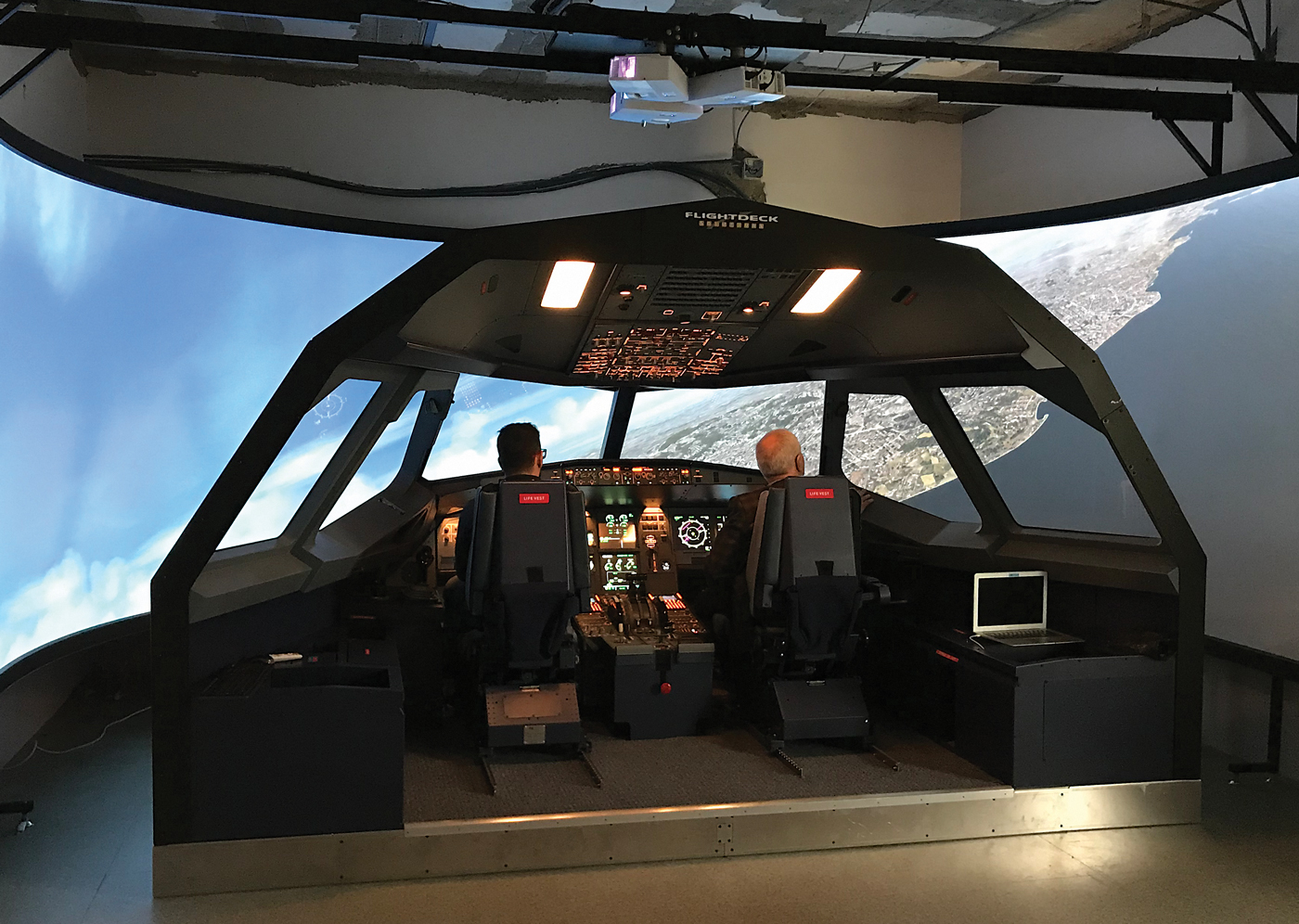

What a wonderful summary of your work over the years. I learned more about your successful business and am grateful that you took the time to educate us all about your incredible company. Keep on flying!
I have had the pleasure to know both Steve and Peter for sometime. Both of these individuals ooze honesty and integrity. Their enthusiasm for the business and attention to detail is infectious and reflects itself in the products they produce. What a contribution they are making.